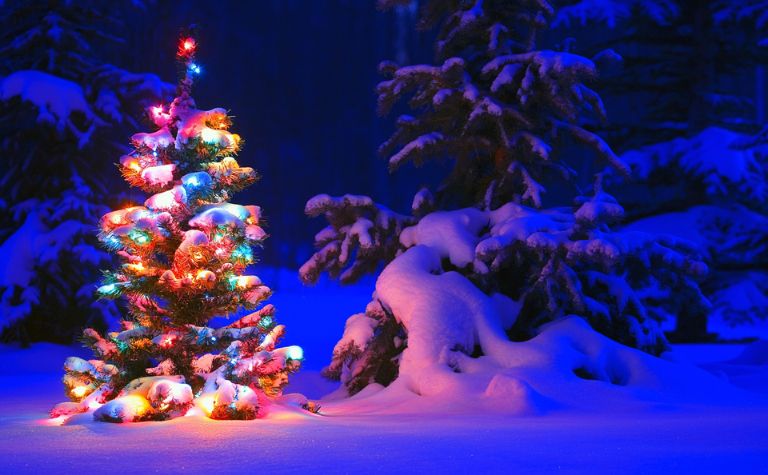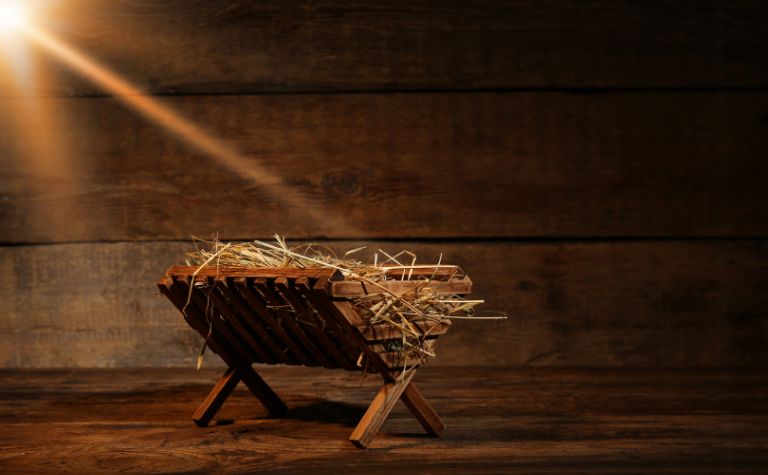“T’was the Night Before Christmas,” originally titled “A Visit from St. Nicholas,” is one of the most beloved and widely recited poems during the festive season.
Its vivid imagery and rhythmic verses have captivated readers for generations, painting a magical picture of Christmas Eve.
However, while the poem’s lines are familiar to many, the story behind its authorship is less well-known.
This article aims to shed light on the mystery surrounding who truly wrote this iconic piece, exploring claims, controversies, and the evidence that has emerged over the years.

The Poem’s Initial Publication
“A Visit from St. Nicholas,” more commonly recognized by its opening line “T’was the Night Before Christmas,” first graced the public in 1823.
It made its debut in the “Troy Sentinel,” a newspaper in upstate New York, just days before Christmas.
Interestingly, the poem was published without an author’s name attached, leading to much speculation and curiosity about its origins.
The poem’s enchanting portrayal of St. Nicholas and his reindeer, combined with its rhythmic verses, quickly gained popularity.
It wasn’t long before it became a staple in Christmas celebrations across the United States.
As its fame grew, so did the intrigue about the individual behind these memorable lines.
Despite its widespread recognition, for years, the identity of the poet remained a mystery.
The anonymity of the initial publication set the stage for one of the most enduring debates in literary history, with multiple claims to its authorship emerging over time.
This debate would intertwine families, scholars, and historians in a quest to uncover the true creator of this iconic Christmas poem.

Clement Clarke Moore’s Claim
Clement Clarke Moore, a professor and scholar from New York City, is often credited as the author of “A Visit from St. Nicholas.”
It wasn’t until 1837, a full 14 years after the poem’s initial publication, that Moore publicly claimed it as his own.
The claim was based on the inclusion of the poem in an anthology of his works.
Moore’s background in classical literature and his reputation as a respected academic lent credibility to his claim.
Furthermore, his family provided consistent accounts of the poem’s creation, recounting how Moore had penned it on a snowy winter’s day for his children, drawing inspiration from the snowy landscapes and local Dutch legends about St. Nicholas.
In 1844, Moore further solidified his claim by including “A Visit from St. Nicholas” in a volume of his poetry.
This publication, combined with testimonials from friends and family who recalled Moore reading the poem aloud in earlier years, seemed to offer compelling evidence in his favor.
For many years, Moore’s claim went largely uncontested, and he became widely accepted as the poem’s author.
However, as time went on, another potential author emerged, casting doubt on Moore’s claim and adding a new layer to the mystery surrounding this beloved Christmas classic.

The Henry Livingston Jr. Controversy
While Clement Clarke Moore was long believed to have written the poem, claims later surfaced that Henry Livingston Jr., a New York farmer and Revolutionary War veteran, penned it earlier, as he often wrote similar verses for his family.
The controversy began when Livingston’s descendants started asserting that their ancestor, not Moore, was the true author of the iconic poem.
They recalled family stories of Livingston reading the poem to them years before its publication in the “Troy Sentinel.”
These accounts painted a picture of a man who enjoyed crafting playful and rhythmic verses, much in the style of the famous Christmas poem.
Supporting the Livingston claim were notable differences in writing style between Moore’s known works and “A Visit from St. Nicholas.”
Linguistic studies and analyses seemed to align more closely with Livingston’s jovial and whimsical style than with Moore’s more formal and scholarly approach to poetry.
While no concrete evidence, such as original manuscripts, has been found to definitively attribute the poem to Livingston, the compelling arguments from his descendants and supporting analyses have ensured that the debate over the poem’s true authorship remains alive and well.
Modern Investigations and Conclusions
In the age of technology and advanced research methods, the mystery surrounding the authorship of “A Visit from St. Nicholas” has been revisited with renewed vigor.
Linguists, historians, and literary experts have all weighed in, using modern tools to shed light on this enduring question.
One significant approach has been the use of linguistic analysis. By examining the structure, vocabulary, and stylistic choices of the poem in comparison to other works by both Moore and Livingston, experts have tried to determine a more definitive author.
Some studies have pointed out that the poem’s playful and light-hearted tone aligns more closely with Livingston’s known works, while others maintain that certain phrasings and word choices are characteristic of Moore.
Additionally, historical records, letters, and journals have been scoured for any mention or hint about the poem’s creation.
While some anecdotal evidence supports both claims, no definitive proof has been unearthed that conclusively attributes the poem to one author over the other.
In conclusion, while modern investigations have provided valuable insights and reignited interest in the poem’s origins, the true authorship of “A Visit from St. Nicholas” remains a topic of debate.
What is undeniable, however, is the poem’s lasting impact and its cherished place in Christmas celebrations around the world.
Related Questions
Joseph, the husband of Mary and the earthly father of Jesus Christ, is depicted in the Gospels as humble, law-abiding, and obedient. In many Christmas scenes, such as in displays of the manger, he is...
The virgin Mary, the mother of Jesus, is one of the most fascinating people in the Bible. For 2,000 years, people of different eras and cultures have marveled at her faith in God. Mary's story in the...
